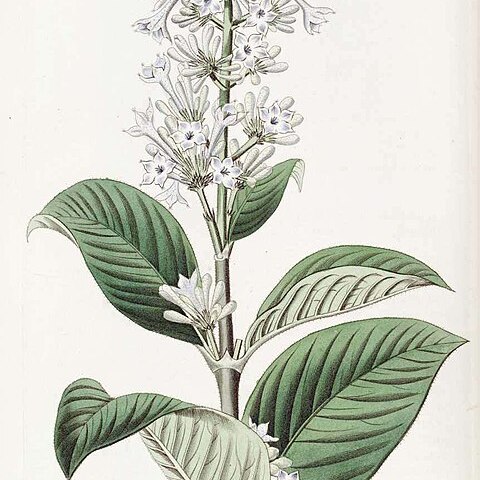Subshrubs, 1-3 m tall, perhaps rather fleshy; branches somewhat flattened to quadrangular or subterete, tomentulose to glabrescent. Petiole 12-18 mm, pilosulous or tomentulose to glabrescent; leaf blade drying papery, elliptic-lanceolate to elliptic or ovate, 13-20 × 4-6.5 cm, adaxially glabrous or pilosulous to puberulent to tomentulose, abaxially tomentulose to villosulous with pubescence denser on principal veins, base acute to cuneate or rounded, apex acute to obtuse; secondary veins 10-16 pairs; stipules triangular to broadly triangular, 2-4 mm, tomentulose to glabrous, obtuse to subacute. Inflorescences 5-25 cm, tomentulose to villosulous; peduncles 3-5 cm; bracts ovate to triangular or oblanceolate, 1-4 mm. Calyx densely pilosulous; ovary portion cylindrical to ellipsoid, ca. 1 mm; limb lobed essentially to base; lobes linear-lanceolate, 1.2-2 mm, acute. Corolla blue or white, outside densely tomentulose to villosulous; tube 8-12 mm; lobes ovate to triangular, 1.5-3 mm, acute. Fruit ellipsoid to ovoid, 3-4 mm, densely pilosulous.
More
A shrub. It grows about 2 m high. The leaves have stalks. They are opposite. Leaves are 7-22 cm long by 3-10 cm wide. They are oblong. The flowers are blue and arise from the same point in a branched flower arrangement. The fruit is a capsule. It is oval and has 5 seeds.

